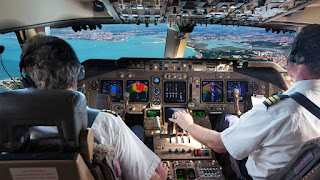 |
Image source: best-wallpaper.net
|
There was a time when passenger planes had three pilots on the flight deck. Then in the 1980s, the development of Boeing 757 transformed the way cockpits are designed. The number of pilots had also been reduced to two with the help of the progress of flight technology.
Decreasing that number further to one has proven to be difficult. Firstly, current European aviation regulation requires passenger planes with at least 19 seats to be flown by a minimum of two pilots for safety, especially in long-haul journeys, and security. Passengers would also probably be concerned of flying in a single-pilot plane because of news of accidents, deliberate or otherwise, of aircrafts.
 |
Image source: caa.gov.qa
|
But having commercial jets that can be operated by one pilot may become a necessity in a few years. There is currently a pilot shortage, which is exacerbated by the fact that the aviation industry is continuing to grow. Furthermore, airline companies can save billions of dollars in salaries and training expenses by requiring just a single pilot.
Aircraft manufacturers are designing advanced cockpits that can be operated by a single person. For example, the vast array of knobs and switches can be changed into more digital interfaces. It may not be in the near future, but single-pilot passenger aircrafts are becoming more and more possible.
Scott Beale is an accomplished business developer, entrepreneur, and aviation professional. His expertise includes commercial sales and marketing of aviation products, government contracting, FAA certifications, maintenance report operations, and startup operations. Visit this website for more information about him.